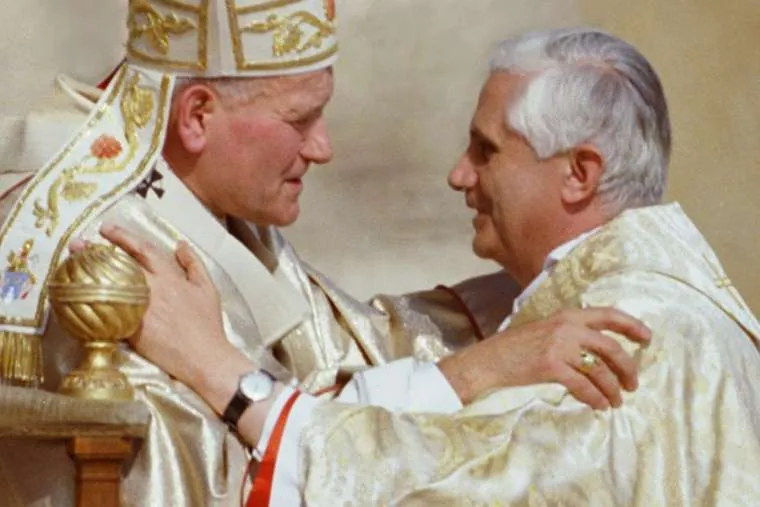“This feeling that nothing was no longer certain, that everything was questioned, was kindled even more by the method of implementation of liturgical reform. In the end, it almost seemed that the liturgy could be created of itself.”
Benedict continued: “Paul VI brought the Council to an end with energy and determination, but after its conclusion, he faced ever more pressing problems that ultimately questioned the existence of the Church Herself.”
“At that time, sociologists compared the Church’s situation to the situation of the Soviet Union under the rule of Gorbachev, during which the powerful structure of the Soviet state collapsed under the process of its reform.”
He said that John Paul II was able to restore the Church’s equilibrium, helped by the fact that the Polish Church had experienced “a joyful renewal” in the wake of Vatican II while struggling against communism.
Through his extensive travels and his 14 encyclicals, the Polish pope shared “a message of joy” and “comprehensively presented the faith of the Church and its teaching in a human way,” Benedict said.
(Story continues below)
He identified the “true center” of the saint’s life as the Divine Mercy devotion promoted by the Polish nun Faustina Kowalska.
Benedict, who served as prefect of the Vatican Congregation for the Doctrine of the Faith under John Paul II, recalled that his Congregation had twice advised the pope not to establish the Second Sunday of Easter as Divine Mercy Sunday.
“It was certainly not easy for the Holy Father to accept our reply,” he recalled. “Yet, he did so with great humility and accepted our negative response a second time. Finally, he formulated a proposal that left the Second Sunday of Easter in its historical form but included Divine Mercy in its original message.”
“There have often been similar cases in which I was impressed by the humility of this great pope, who abandoned ideas he cherished because he could not find the approval of the official organs that must be asked according to established norms.”
Benedict suggested that those who present John Paul II as a stern moralist overlook his message that “in the end God’s mercy is stronger than our weakness.”
“Moreover, at this point, the inner unity of the message of John Paul II and the basic intentions of Pope Francis can also be found: John Paul II is not the moral rigorist as some have partially portrayed him,” he wrote.
“With the centrality of divine mercy, he gives us the opportunity to accept moral requirements for man, even if we can never fully meet them. Besides, our moral endeavors are made in the light of divine mercy, which proves to be a force that heals for our weakness.”
Benedict XVI recalled that on the day of John Paul II’s funeral, which he presided over, there were cries of “Santo subito!” Alongside these appeals for canonization, there was also a discussion “in different intellectual circles” about whether John Paul should be accorded the title “the Great.”
Benedict waived the customary five-year waiting period for saints’ causes, authorising the opening of the cause just a month after John Paul II’s death. The Pope emeritus insisted that the canonization process was “carried out strictly according to the applicable rules.”
He said that, while it was clear that John Paul II was worthy of canonization, it was difficult to define the term “great.” He noted that only two popes in the almost 2,000-year history of the papacy were known as “the Great” -- Leo I, who had convinced Attila the Hun to spare Rome, and Gregory I, who had protected the city from the Lombards.
“If we compare both stories with that of John Paul II, the similarity is unmistakable,” he wrote. “John Paul II also had no military or political power. During the discussion about the future shape of Europe and Germany in February 1945, it was said that the Pope’s reaction should also be taken into account. Stalin then asked: ‘How many divisions does the Pope have?’ Well, he had no available division. However, the power of faith turned out to be a force that finally unhinged the Soviet power system in 1989 and made a new beginning possible.”
“Undisputedly, the Pope’s faith was an essential element in the collapse of the powers. And so, the greatness that appeared in Leo I and Gregory I is certainly also visible here.”
But Benedict concluded that the question of whether John Paul II should be called “the Great” should be left open.
“It is true that God’s power and goodness have become visible to all of us in John Paul II. In a time when the Church is again suffering from the oppression of evil, he is for us a sign of hope and confidence,” he said.








